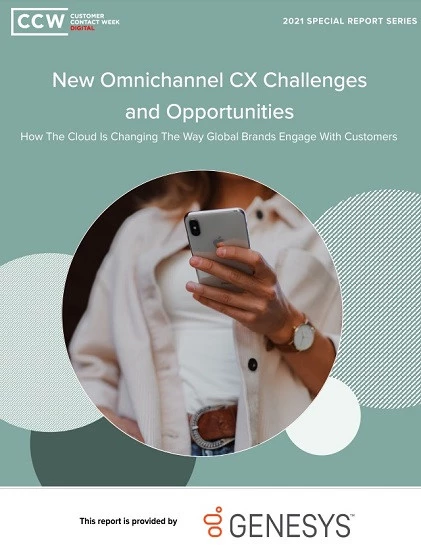3 Ways To Create A More Customer-Centric Reputation
Add bookmarkThe following first appeared in CCW Digital's Special Report on Brand Reputation
“Customer empowerment” may be a buzz phrase, but it is certainly not empty rhetoric.
Insofar as the voice of the customer can markedly – and permanently – impact a brand’s reputation, there is no denying that today’s customers are considerably powerful.
That power does not, however, have to be a source of fear for organizations. Savvy brands view it is an immense opportunity.
If the voice of the customer can impact a brand’s reputation, then positive sentiment stands to greatly improve a brand’s reputation. It stands to provide the brand with a more favorable image and thus an easier pathway to acquiring new customers.
Reputation management strategy, as a consequence, should not merely be an exercise in fixing problems and preventing brand crises. It should also involve efforts to cultivate advocates who will happily endorse the brand.
Connecting With “At-Risk” Customers
Many organizations have some methodology for prioritizing customers. Some focus their energy on “hot leads” who are looking to make an urgent purchase. Others direct their efforts toward “high-value customers” that are likely to spend money over time.
Reputation-minded businesses view “at-risk” customers as priorities. Aware that these customers will take their business elsewhere at best and vehemently blast the brand at worst, they do everything in their power to quell any ill-will.
More importantly, they do everything in their power to turn these customers into advocates.
Upon identifying “at-risk” customers – whether those customers are still engaging in the contact center or already complaining on social media – Shep Hyken advocates a five-step mitigation approach:
- Acknowledge the problem / 2) Apologize / 3) Discuss plans for the resolution / 4) Take ownership of the situation / 5) Act with urgency
Driving Brand Advocacy
Customer loyalty provides a line of defense against reputation issues. It does not necessarily improve a brand’s reputation.
That improvement comes when loyal customers begin to advocate for brands.
There are two particularly effective strategies for driving advocacy.
Encourage and empower, but don’t incentivize
While there is nothing wrong with encouraging customers to post positive reviews, incentivization is a weak strategy for driving meaningful advocacy.
For starters, paid reviews are prohibited on certain sites. Even when permitted, they are easy to identify and thus of limited value.
They also gives a misleading, unsustainable sense of its reputation. The business has no way to assess the true level of customer advocacy – and thus the true health of its reputation.
A more effective advocacy program is built on neutral empowerment. There are two tenets to this concept:
- Share links to review portals, helping customers easily share honest feedback.
- Provide customers with a substantive reason to discuss your brand. As an example, instead of explicitly asking customers to rave about your new pre-workout powder, create a web community where they can share workout tips, progress photos and success stories. Your brand benefits, and supportive customers do not not feel like – or come across as – shills.
Create a clear identity
In the past, the idea of taking a stand was considered commercial suicide. Businesses were advised to remain as innocuous as possible.
In today’s marketplace, taking a stand is essential. The best, most supportive customers do not simply “buy from businesses” in private. They like and publicly endorse brands in front of social media followers. The brands they support actually help to define their identities.
Given that reality, customers need to be proud of the brand. They need to believe in its mission and support the issues for which it stands.
Promote Your Customer Centricity
“Cool people do not have to tell everyone how cool they are.”
Gospel on the playground, that statement also carries some relevance in the customer experience landscape.
Delivering a great, customer-centric experience is a marketing initiative in its own right. When customers are routinely thrilled with the experience they receive, they will consistently return for future purchases. They, moreover, will share their praise with peers – and essentially handle the business’ marketing.
Unlike a cool kid on the playground, however, there is no reason a brand cannot work to amplify that messaging.
The key is to play into the same organic, experience-driven sensibility. Rather than advertising a product feature, leading brands view “marketing” as a way to demonstrate their customer centricity. They wow customers with their responsiveness on social media. They engage in customer-oriented stunts (think: bringing steak to a customer at the airport). They espouse an identity (and values) that aligns with customers.
When devising marketing campaigns (or any public messaging), the goal is not to reveal why customers should buy the product. It is to reveal why customers should buy from you.













